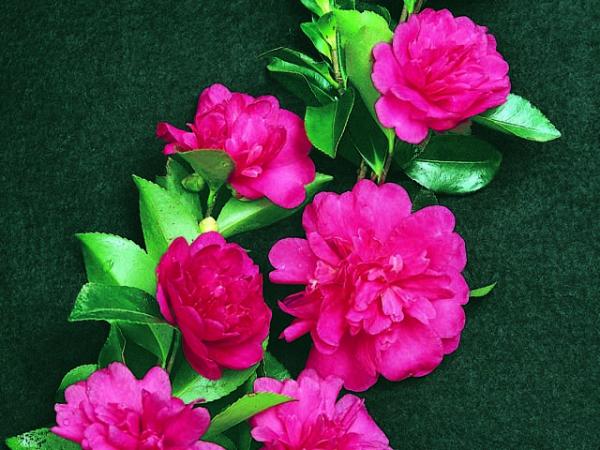Array
(
[0] => Array
(
[id] => 455
[is_published] => 1
[websiteID] => 5
[url] => /gardening/lawn-to-envy-in-6-easy-steps.php
[page_status] => Published
[number_of_ads] => 1
[can_use_editor] => 1
[last_modified_date] => 2013-09-16 00:00:00
[last_modified_by] => Alan
[checked_for_duplicate_content] =>
[title] => A lawn to envy in 6 easy steps
[heading] => A lawn to envy in 6 easy steps
[meta_description] => Six step lawn maintenance guide.
[article_category_1] => Gardening
[article_category_2] =>
[article_category_3] =>
[article_category_4] =>
[article_category_5] =>
[business_category_1] => Landscaper
[business_category_2] => Nursery
[business_category_3] => Garden Designer
[business_category_4] => Landscape Architect
[business_category_5] =>
[number_of_google_mrecs] =>
[show_google_ad_bottom_of_page] =>
[show_get_quotes_top_of_page] =>
[show_get_quotes_rhs_of_page] =>
[show_directory_search_widget] =>
[show_trending_content_widget] =>
[show_facebook_widget] =>
[show_further_reading_section] => 1
[show_sponsors_section] => 0
[show_top_article_ad] => 1
)
[1] => Array
(
[id] => 410
[is_published] => 1
[websiteID] => 5
[url] => /articles/external-privacy-screens.php
[page_status] => Published
[number_of_ads] => 2
[can_use_editor] => 1
[last_modified_date] => 2013-09-10 00:00:00
[last_modified_by] => Alan
[checked_for_duplicate_content] =>
[title] => External privacy screens
[heading] => External privacy screens
[meta_description] => External privacy screens began to appear in Australian residential and commercial building during the 1950's and 1960's, as a direct result of high density living and higher incomes. For more information and some examples read this article.
[article_category_1] => Landscaping
[article_category_2] =>
[article_category_3] =>
[article_category_4] =>
[article_category_5] =>
[business_category_1] => Landscaper
[business_category_2] => Nursery
[business_category_3] => Garden Designer
[business_category_4] => Landscape Architect
[business_category_5] =>
[number_of_google_mrecs] => 1
[show_google_ad_bottom_of_page] => 1
[show_get_quotes_top_of_page] => 1
[show_get_quotes_rhs_of_page] => 1
[show_directory_search_widget] => 1
[show_trending_content_widget] => 1
[show_facebook_widget] => 1
[show_further_reading_section] => 1
[show_sponsors_section] => 1
[show_top_article_ad] => 1
)
[2] => Array
(
[id] => 462
[is_published] => 1
[websiteID] => 5
[url] => /gardening/plant-finder/search.php
[page_status] => Published
[number_of_ads] => 3
[can_use_editor] => 0
[last_modified_date] => 2013-10-13 00:00:00
[last_modified_by] => Alan
[checked_for_duplicate_content] =>
[title] => Find a plant for your garden or home
[heading] => Find a plant for your garden or home
[meta_description] => Search for plants and flowers visually, by name, flower colour and other attributes. Search for native plants, edible plants and popular exotics such as roses and petunias.
[article_category_1] => Gardening
[article_category_2] => Landscaping
[article_category_3] =>
[article_category_4] =>
[article_category_5] =>
[business_category_1] => Landscaper
[business_category_2] => Garden Maintenance
[business_category_3] =>
[business_category_4] =>
[business_category_5] =>
[number_of_google_mrecs] => 1
[show_google_ad_bottom_of_page] => 1
[show_get_quotes_top_of_page] => 0
[show_get_quotes_rhs_of_page] => 0
[show_directory_search_widget] => 0
[show_trending_content_widget] => 0
[show_facebook_widget] => 0
[show_further_reading_section] => 0
[show_sponsors_section] => 0
[show_top_article_ad] => 0
)
[3] => Array
(
[id] => 521
[is_published] => 1
[websiteID] => 5
[url] => /gardening/attracting-fauna-to-your-garden.php
[page_status] => Published
[number_of_ads] => 3
[can_use_editor] => 1
[last_modified_date] => 2013-09-16 00:00:00
[last_modified_by] => Alan
[checked_for_duplicate_content] =>
[title] => Attracting fauna to your garden
[heading] => Attracting fauna to your garden
[meta_description] => This article explains how you can attract native australian wildlife to your garden.
[article_category_1] => Gardening
[article_category_2] =>
[article_category_3] =>
[article_category_4] =>
[article_category_5] =>
[business_category_1] => Landscaper
[business_category_2] => Garden Maintenance
[business_category_3] => Garden Supplies
[business_category_4] => Garden Designer
[business_category_5] => Garden Tools
[number_of_google_mrecs] =>
[show_google_ad_bottom_of_page] =>
[show_get_quotes_top_of_page] =>
[show_get_quotes_rhs_of_page] =>
[show_directory_search_widget] =>
[show_trending_content_widget] =>
[show_facebook_widget] =>
[show_further_reading_section] => 1
[show_sponsors_section] => 0
[show_top_article_ad] => 1
)
)
Helpful articles
A lawn to envy in 6 easy steps. Six step lawn maintenance guide.
External privacy screens. External privacy screens began to appear in Australian residential and commercial building during the 1950's and 1960's, as a direct result of high density living and higher incomes. For more information and some examples read this article.
Find a plant for your garden or home. Search for plants and flowers visually, by name, flower colour and other attributes. Search for native plants, edible plants and popular exotics such as roses and petunias.
Attracting fauna to your garden. This article explains how you can attract native australian wildlife to your garden.
Plant description
Camellia sasanqua 'Paradise Caroline' is a hardy evergreen shrub with large, showy deep rose pink informal double flowers. It is a bushy and vigorous upright plant with glossy green foliage to around 4 metres high, and is an excellent hedging variety. It is also good for espalier work, as a screen plant or as a specimen plant. It can be grown in a large container. It can be kept to a lower height with regular pruning. The foliage is good for cut flower work.
Sasanqua camellias can be grown in a sunny spot as well as being well suited to partial shade. They like a slightly acid, moist soil. Water regularly until established. They will handle periods of drought once established. They can be left to grow naturally, or clipped to shape. Fertilise in spring with a camellia and azalea fertilser or general purpose fertiliser. A good layer of mulch around the plant will help to keep the root zone cool, deter weed growth, and conserve soil moisture. They have few pests or disease problems.
Further reading: Hedges and
Pruning a hedge in 7 steps (articles written by horticulturalist Angus Stewart).
Additional plant information
Flowers
Flower colour: pink
Flowering season: autumn
Plant size
Maximum height: 4 metres
Minimum height: not specified
Maximum width: not specified
Minimum width: not specified
Sunlight, frost & salt tolerance
This plant will tolerate full or partial sunlight.
Medium frost tolerance.
Plant is salt tolerant.
Fauna attracting?
Yes. Attracts: Birds, insects, bees.
Climate
This plant species will grow in the following climates: cool, temperate, subtropical.
Soil types & conditions
Loam: moist, well-drained.
Clay: moist, well-drained.
Sand: moist.
Soil pH: 5.5-6.5
Pests
Scale, aphids, mites
Miscellaneous information
Planting season: Any.
Types of fertiliser: Good general purpose fertiliser.
Find a nursery
Search for another plant

